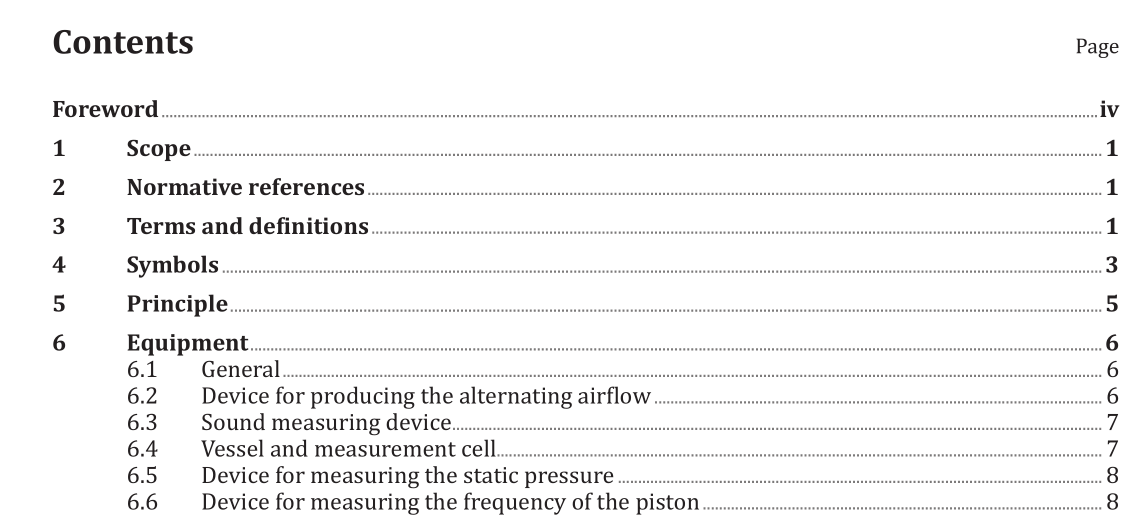ISO 9053-2:2020 pdf download.Acoustics — Determination of airflow resistance — Part 2: Alternating airflow method
1 Scope
This document specifies an alternating airflow method for the determination of the airflow resistance [5], [6] of porous materials for acoustical applications. Determination of the airflow resistance based on static flow is described in ISO 9053-1.
2 Normative references
The following documents are referred to in the text in such a way that some or all of their content constitutes requirements of this document. For dated references, only the edition cited applies. For undated references, the latest edition of the referenced document (including any amendments) applies.
ISO/IEC Guide 98-3, Uncertainty of measurement — Part 3: Guide to the expression of uncertainty in measurement (GUM: 1995)
3 Terms and definitions
For the purposes of this document, the following terms and definitions apply.
ISO and IEC maintain terminological databases for use in standardization at the following addresses:
— ISO Online browsing platform: available at https:// www .iso .org/ obp
— IEC Electropedia: available at http:// www .electropedia .org/
5 Principle
An alternating volume flow with a low frequency, f , for example of 2 Hz, is generated by a piston or similar device (see Figure 1 and Figure 2) moving sinusoidally. This volume flow acts on an air cavity that is either closed by an airtight termination or terminated by the test specimen mounted in a measurement cell. The sound pressure level is measured in the air cavity for both cases. The pressure inside the cavity is the outside atmospheric pressure modulated by the alternating flow generated by the piston. The microphone mounted inside the cavity therefore measures the pressure difference across the specimen when the test cell with the specimen is mounted. When the air cavity is closed, the volume flow creates a sound pressure in the air cavity that can be calculated from the piston movement, the dimensional information of the cavity and the atmospheric air pressure. When the measurement cell is mounted, the main part of the generated volume flow passes through the test specimen and a lower sound pressure is observed in the air cavity. The difference between the sound pressure levels when the vessel is closed and when the test cell is mounted is a direct function of the airflow resistivity of the test specimen. By the measurement of the sound pressure differences, the airflow resistance for the test specimen can be computed. It can be practical to use different piston stroke lengths for the closed vessel and when the measurement cell is mounted.
ISO 9053-2:2020 pdf download
